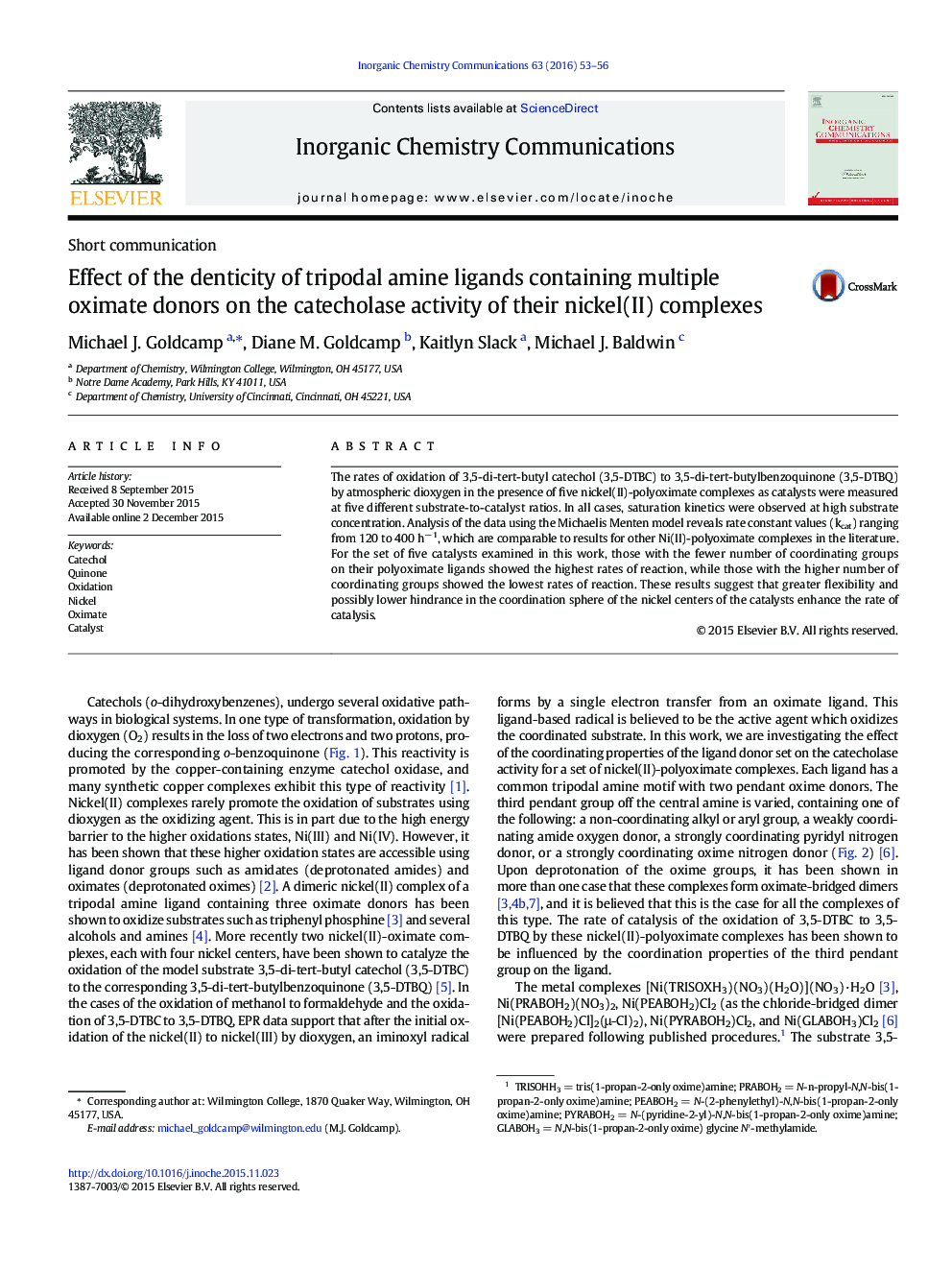| Article ID | Journal | Published Year | Pages | File Type |
|---|---|---|---|---|
| 1305312 | Inorganic Chemistry Communications | 2016 | 4 Pages |
•3,5-di-tert-butylcatechol is aerobically oxidized to the quinone in the presence of nickel(II) complexes of oximate-containing ligands.•Rates of catalysis for the nickel(II) complexes are comparable to other nickel(II)-oximate complexes.•The rate of catalysis increases for ligands that provide greater accessibility to the nickel coordination sphere.
The rates of oxidation of 3,5-di-tert-butyl catechol (3,5-DTBC) to 3,5-di-tert-butylbenzoquinone (3,5-DTBQ) by atmospheric dioxygen in the presence of five nickel(II)-polyoximate complexes as catalysts were measured at five different substrate-to-catalyst ratios. In all cases, saturation kinetics were observed at high substrate concentration. Analysis of the data using the Michaelis Menten model reveals rate constant values (kcat) ranging from 120 to 400 h− 1, which are comparable to results for other Ni(II)-polyoximate complexes in the literature. For the set of five catalysts examined in this work, those with the fewer number of coordinating groups on their polyoximate ligands showed the highest rates of reaction, while those with the higher number of coordinating groups showed the lowest rates of reaction. These results suggest that greater flexibility and possibly lower hindrance in the coordination sphere of the nickel centers of the catalysts enhance the rate of catalysis.
Graphical abstractThe rate of the transformation of 3,5-di-tert-butylcatechol to 3,5-di-tert-butylbenzoquinone in the presence of nickel(II)-polyoximate catalysts is monitored by the growth of the quinone absorbance at 400 nm.Figure optionsDownload full-size imageDownload as PowerPoint slide
